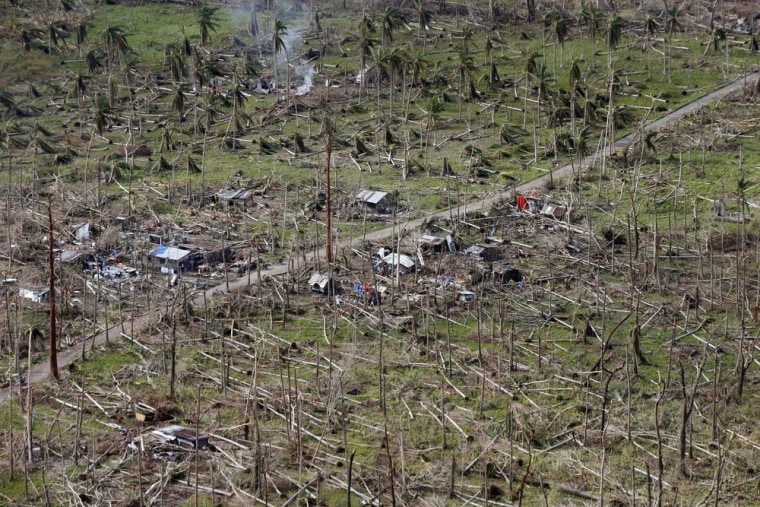KUALA LUMPUR/MANILA — The destruction of an estimated 3 million coconut palms in last month's deadly typhoon in the Philippines is set to squeeze global supply for years of the tropical fruit used to make products from fuel to health drinks.
Even before Typhoon Haiyan tore through the Philippines, the United Nations had warned that global demand for coconuts was outstripping production in Asia, home to 85 percent of output.
The crop losses in the Philippines, the world's top exporter of coconut oil, have already helped drive prices up as much as 40 percent since the early November storm and led to a scramble for supplies from top producer Indonesia, and for alternatives to the edible oil.
But with little chance of Indonesia or India, another top producer, plugging the gap prices are expected to climb even further next year and beyond, analysts and traders say.
There is also continuing demand pressure, helped by heavy marketing of coconut water as an electrolyte-rich health drink that has led investments in suppliers by soft drink giants Coca-Cola Co. and PepsiCo Inc.
Coconut water and milk account alone for 30 percent of coconut consumption, according to data from the United Nations.
Coconut oil is extracted by crushing dried coconut, and is widely used in items such as soap and cosmetics, due to being rich in fatty lauric acid.
The leftover, copra meal, is often used as animal feed.
"One thing about lauric oils is they are the one oil when things are bad on supply, they can really go up crazily because people don't have much choice," James Fry, chairman of commodities consultancy LMC International, told Reuters.
Philippine supply worries after Typhoon Haiyan struck Nov. 8 drove Rotterdam coconut oil prices as high as $1,480 per tonne on Nov. 13, up 40 percent from before the storm and 80 percent on the year.
And analyst Fry and some traders say prices, currently at around $1,260, could hit $2,000 next year due to lower Asian supply.
While substitutes such as palm kernel oil could soak up some demand, plans to raise the Philippines' mandatory biodiesel blend could divert more coconut oil for fuel and add to demand pressures.
For the Philippines, the destruction will hurt not just exports but also millions of families making a living from producing and trading coconut oil and other products.
It could take years for supplies to be replenished after the storm that killed more than 6,000 people. Replanting will start only after relief operations are in place and trees will only bear fruit after three years.
The typhoon has knocked out up to 300,000 tonnes of coconut oil supply in the Southeast Asian country, according to the Philippine Coconut Authority (PCA), a government-linked agency.
"The full impact will be felt next year," said PCA administrator Euclides Forbes, adding he hoped the decline in exports worth around $1 billion in 2012 would not exceed 10 percent.
Forbes said among the hardest-hit areas were Leyte and Samar, provinces accounting for 15 percent of the 852,000 tonnes of coconut oil exported in 2012.
"The livelihoods of one in every five Filipinos are directly or indirectly dependent on the coconut sector," said Romulo Arancon, executive director of the Asian and Pacific Coconut Community, a group representing 18 coconut-producing countries.
Indonesia could go some way in helping fill the gap in global demand, but relief will be limited as Southeast Asia's most populous nation typically consumes a lot of supply locally.
Indonesia produced about 850,000 tonnes of coconut oil in 2012, half of which was exported. However, the sector faces its own struggles from land scarcity to aging trees.
Donatus Gede Sabon, secretary general of the Indonesian Coconut Forum, estimated the country's output could drop by 0.5-1 percent this year and fall further in 2014.
India, which exports only about 6,500 tonnes of the world's 1.9 million annual coconut oil exports, will also offer little help as its domestic consumption grows alongside a swelling population.
The UN's Food and Agriculture Organization said last month that growth in output of coconut products in Asia was running at 2 percent annually, well behind the 10 percent global demand growth. The comments were made before the typhoon struck.
